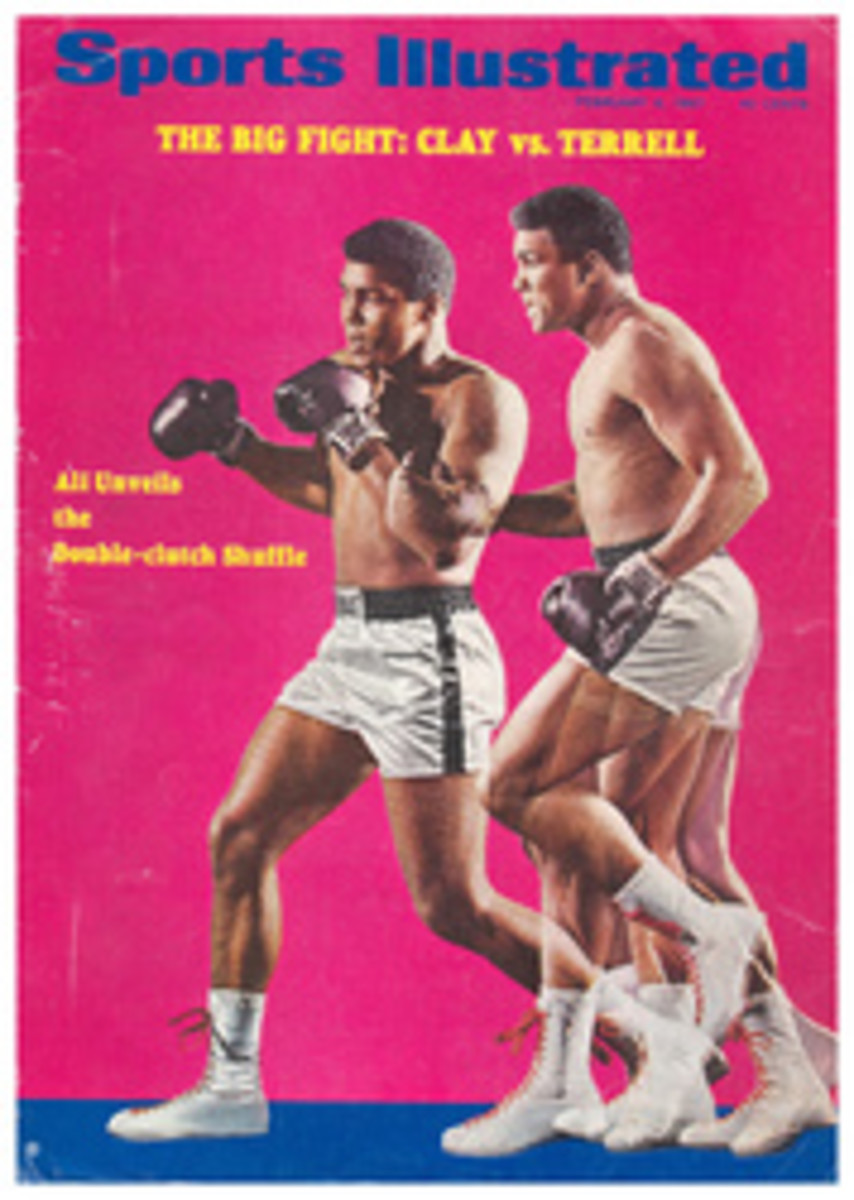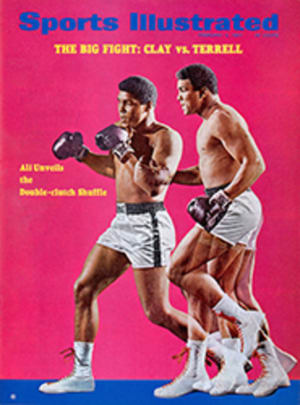
SPRING FOR THE FEATHERS
For the fancier of sporting dogs, there is no more thrilling spectacle than that of a spirited springer spaniel boldly sailing in to flush and nearly grab a cackling cock pheasant from heavy cover (right). The lucky fanciers who showed up at the 20th English Springer Spaniel National Championship Stake held recently at Crab Orchard Wildlife Area in Marion, Ill. saw the best of these swinging little bird dogs and their handlers compete for three days in 10° temperatures in a demanding series of land and water tests. They also saw history made as a precocious, 18-month-old English import became the youngest dog ever to win this most notable of spaniel field trials.
WILLIE THE PRECOCIOUS UPSTART
On the last day of the National Championship, as Wivenwood Willie (left) came flying back with his last pheasant and soulfully looked up at Larry Mac-Queen, who trains and handles him, another professional handler in the gallery muttered: "I'd have bet anything that a young pup like that would eventually blow up under all this pressure—break on a close-shot bird or chase on a flush. But he didn't and he's a national champion long before his time." But what made Willie's performance in the National even more amazing is that when MacQueen took him off a jet from London at J.F.K. Airport on a hot August night last year the dog had never seen a pheasant.
Ever since he first began training bird dogs 45 years ago in Stirling, Scotland, MacQueen (right) has been partial to springers. When he started Ramornie Kennels in Pottersville, N.J. in 1935, he worked primarily with Labradors, but soon switched to springers. "I've always felt that the springer is the most exciting sporting dog." MacQueen says. "They are the hardest to train, because they are expected to do more at a trial under tighter control than any other breed." Over the years MacQueen has imported 12 springers from England. He has made 10 of them into field-trial champions and two—Ludlovian Bruce, who won in 1954 and 1955, and Willie—into national champions. But he is quick to point out that it was his friend John Forbes, the dean of spaniel trainers in England, who "discovered" Willie.
After seeing the dog work on rabbits and jackdaws (small crows), Forbes wrote MacQueen and said: "With a bit of luck, you might be able to make this dog a champion in his first year." The challenge was made, and MacQueen advised his longtime client, Dean Bedford, a retired oil-company executive from Fallston, Md., to buy the pup from Breeder Jack Davey of Colchester, England.
MacQueen started Willie on pigeons. "He looked great on pigeons," MacQueen recalls, "but his first experience with a pheasant was a bit scary. He flushed the bird nicely and was steady on his hup for the shot. But when I sent him to retrieve he looked the bird over, smelled it and then came dashing back—without the bird. Well, I gulped and gave him more birds, and pretty soon he was picking them up and dragging them back by a foot or a wing—not very pretty, but he was coming back just as fast as he went out, with his tail just slashing all the time. He was and still is happy in his work, and that's the kind of dog you need for field trials."
The English dog learns at an early age to trail rabbits and game birds like a hound, and it is hard work for the American trainer to get the springer's head up so that he is questing for body scent in the air like a pointing dog—often months of work, followed by a fat bird bill for the dog's owner.
"We were lucky with Willie," says MacQueen. "He hadn't been worked too much on rabbits, and he was hunting with a high head when I got him. I did have to increase his range a bit—the English like a narrow dog, but we want one that will quarter a field in casts of 35 to 40 yards on either side, and roughly 10 yards out in front of the handler and the guns. It is not easy to convince any young hotshot springer to stay within gun range, but then Willie is not just any springer. As for his water training, Willie didn't need any. He was already making 80-yard blind water retrieves before I got him."
MacQueen ran Willie in a trial for the first time early in October, but the dog flunked out when he failed to find a shot pheasant that had dropped behind the gallery. It was his last mistake in competition. Willie won his next two open all-age stakes, and thus, two months after he arrived in the U.S., precocious but unproven, he had already earned his field-trial championship. By the second day of the National he was the dog to beat. Willie's last series, run in unusually thick cover, was the best of the trial. He faultlessly handled all three of his birds, but it was the second bird, a running cock pheasant, that clinched the championship for him.
"It was the only time I worried about that wee rascal," MacQueen admits. "Any good dog is liable to become an outlaw when he is boiling along on the hot scent of a running bird." But the moment Willie got out of gun range on the runner, MacQueen simply tooted once on his whistle and the dog immediately hupped. When the guns had walked up closer, MacQueen sent Willie in to flush.
"Willie was just getting better every time he ran," MacQueen said later, "and, Scot or no, I couldn't resist putting $20 on his nose before the last series. After all, a dog like Willie comes along only once in a lifetime."
THREE PHOTOS
HANSON CARROLL
THREE PHOTOS
HANSON CARROLL
Ears flapping and tail flying, an eager springer (top left) quarters a field within gun range. Below him, a dog boldly takes to the water to retrieve a pheasant. Once it springs a bird into the air, a dog must instantly "hup" (stop) and hold until sent to retrieve. A hupping springer (above) intently peers over high sedge grass to mark the fall of a pheasant.

